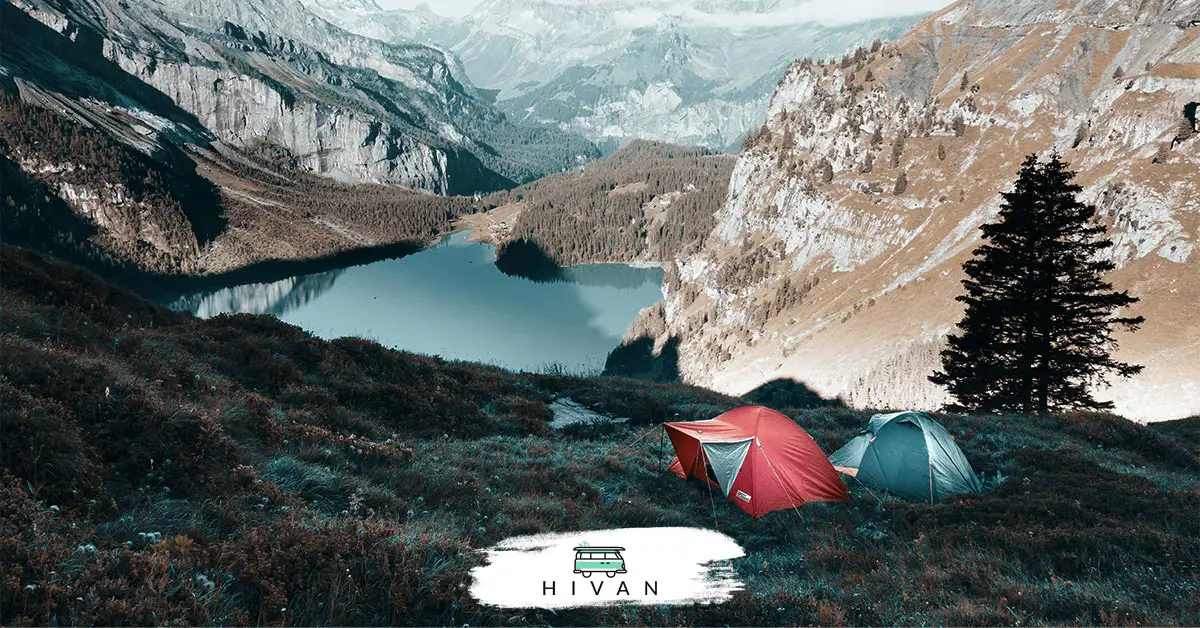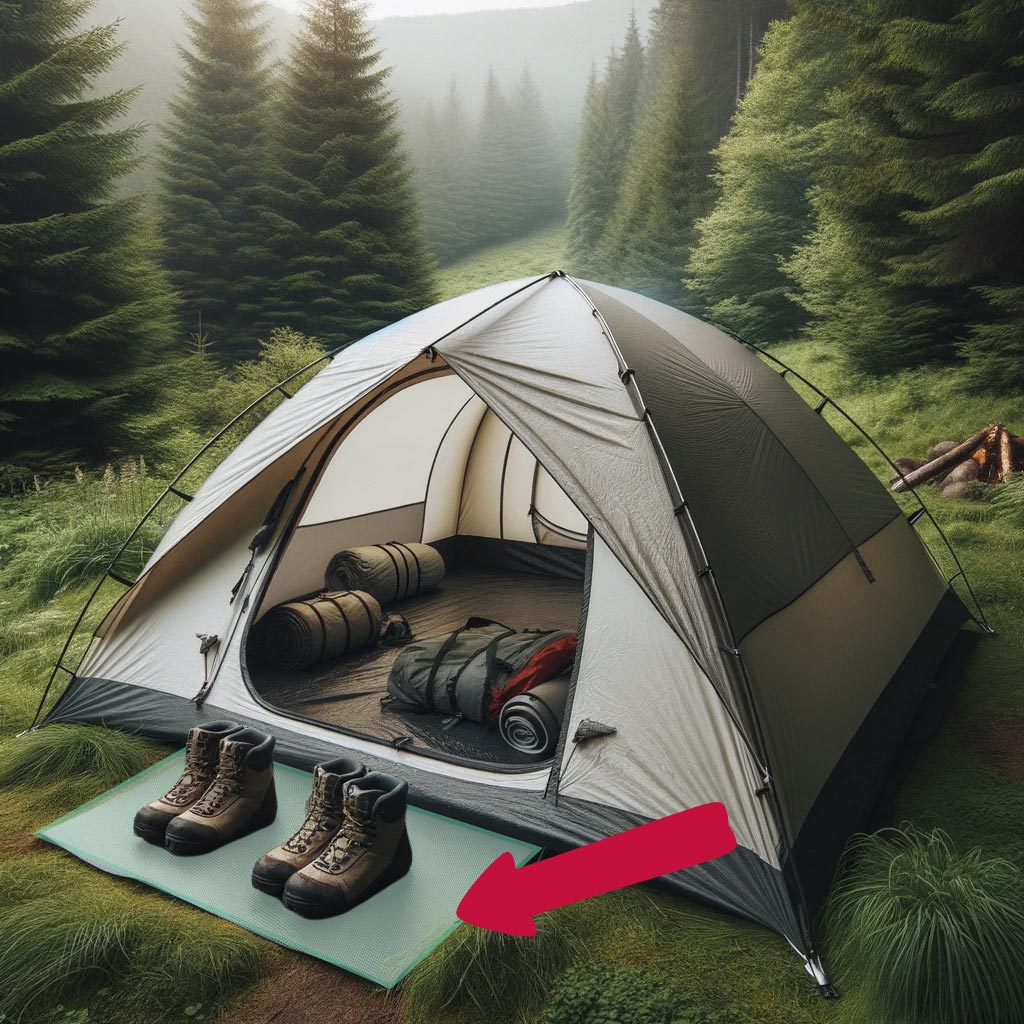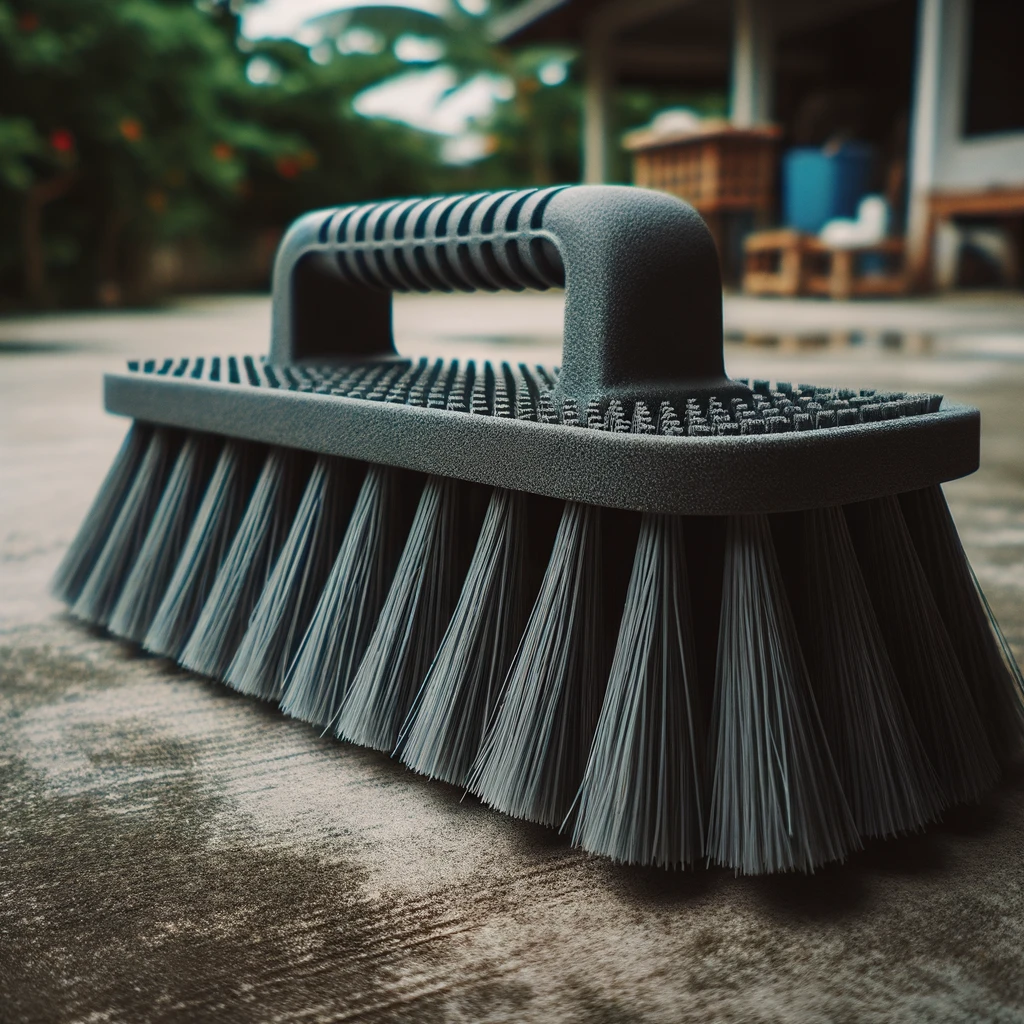Hi-van is supported by its audience. When you purchase using our links, we may earn an affiliate commission (no added cost to you). Learn more
Embrace the wilderness, but leave the grit behind!
Discover the art of maintaining a clean refuge amidst the rugged outdoors in our guide on keeping your tent free from sand, dirt, and mud. Dive in, and transform your camping experience!

Here’s how to keep sand, dirt, and mud out of a tent:
- Choose a tent with a vestibule.
- Always bring a mat
- Don’t bring your shoes or gear inside the tent.
- Point the opening of the tent downwind.
- Bring a dustpan and a brush.
Got a spot near a tree and away from water? Perfect, you’re already halfway there! This isn’t just about location—it’s about making your camping life a whole lot easier.
Stick around for simple tips that’ll help keep your tent cozy and clean, not sandy and muddy.
1. Choose a Tent With a Vestibule

A tent vestibule is a type of equipment that serves as a mudroom when camping.
It serves as a barrier, preventing sand, dirt, and mud from being carried directly into your sleeping and living space. By having a designated area to manage dirty items, the vestibule helps maintain the cleanliness and comfort of your tent’s interior, ensuring a more pleasant camping experience.
It’ll also allow you to keep the space comfortable and warm since you won’t need to bring cold, wet gear inside.
Overall, a vestibule is an excellent investment if you’re looking for a way to keep your campsite as clean as possible.
2. Always Bring a Mat

One of the most critical steps you need to take in ensuring your tent is clean is putting down a mat right in front of its entrance.
You won’t necessarily have to carry around an actual mat because, although ideal, it might not be practical for everyone.
For this purpose, any type of microfiber towel or absorbent piece of fabric will do. The purpose of this fabric is to wipe excess mud and sand off your shoes before entering the tent, allowing you to keep your space clean and dry.
Additionally, consider using a weather-resistant storage bin or a covered tarp outside the tent for storing dirty items like shoes and gear.
This not only helps keep the dirt outside but also protects your items from rain and adverse weather, ensuring they’re ready for your next adventure.
3. Don’t Bring Your Shoes or Gear Inside the Tent

You should never bring shoes inside your tent!
Hiking and exploring in less-than-perfect conditions means that your shoes will be carrying a significant amount of mud and dirt wherever you go. So you certainly don’t want to be bringing them into your sleeping space.
If you don’t own a vestibule, you can leave your footwear right outside your tent, given that the weather allows for it. On the other hand, if for any reason you can’t leave your shoes outside, at least give them a quick clean and put some type of plastic covering over them before entering inside the tent.
![]() But shoes aren’t the only item that can trap and drag impurities into the campsite.
But shoes aren’t the only item that can trap and drag impurities into the campsite.
Your jacket and backpack should also be ideally left outside, as they tend to be the first to get soaked during heavy rain, collecting sand and dirt along the way that may not even be visible.
When they dry out inside the tent, they won’t only make the space humid while also lowering its temperature, but all the contaminants they dragged in with them will fall right into your sleeping space. Cleaning up a tent covered in sand, dust, and mud can be exhausting, so always make sure not to skip these precautionary steps.
4. Point the Opening of the Tent Downwind

Sometimes, even when you try your best not to drag anything inside through your shoes and gear, you still find traces of sand or dust inside the tent. Therefore, when first deciding the perfect spot to pitch your tent, pause for a moment to determine the direction of the wind.
Afterward, you can go ahead and point the opening of the tent downwind, so any potential dust or sand can’t blow in. As long as the weather conditions stay consistent, this is a surefire way to prevent any type of debris from entering inside the sleeping space.
5. Bring a Big Brush

You can follow every simple step mentioned above, and you can still find that dirt, sand, and mud have found their way into your tent. Sometimes, it’s simply unavoidable. In this case, it would help you out immensely if you always had some adequate cleaning supplies on hand.
You don’t need anything unusual to keep the space clean, as a regular dustpan and brush can work wonders in getting rid of any possible debris. They’ll allow you to remove any clutter and impurity before it becomes unmanageable.
After your trip, make sure to turn the tent upside down and shake out any remaining sand or dirt.
Then, you might want to give the whole thing a thorough clean with soapy water and a sponge, as some mud or mildew can still be hiding away in some crevices. After you’re done, your tent will be thoroughly clean and ready to use for your next camping trip.
Key Takeaways
Keeping a tent clean from dust, sand, and mud can be manageable by following a few simple steps. Overall, to keep your campsite clean and dry, do the following:
- Keep your shoes and gear outside.
- Bring an entrance mat and baby powder with you.
- Strategically positioning your tent.
- Always have cleaning supplies on hand.
Find this content useful 🙂 ?
Subscribe to our Newsletter and get a free Solar Electric Diagram + shopping list.

